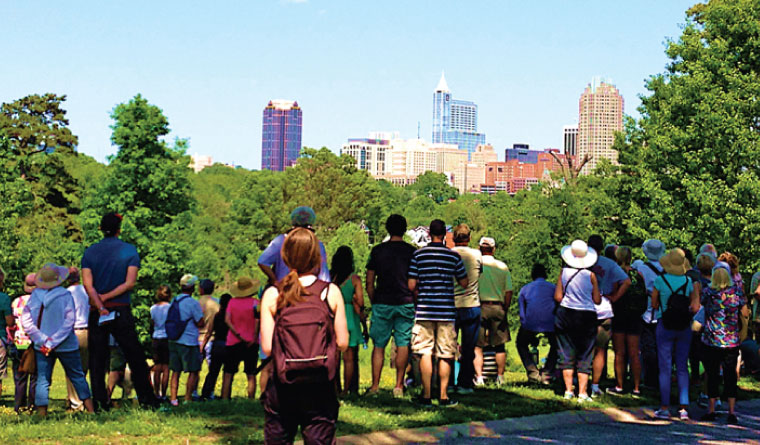
Photo by Katherine Loflin.
Curator’s Note: This blog is Part 3 in a five-part series by Dr. Katherine Loflin in anticipation of the release of her book, Place Match: The City Doctor’s Guide to Finding Where You Belong, later this year. Through both research and her own personal experiences, Katherine has made some important and exciting discoveries about the essence and possibilities in placemaking. We’re excited to partner with her in sharing some of those discoveries through this blog series.
We’ve all been on good dates and bad dates. Ones where we feel an immediate and lasting connection. And ones where we know right away (or pretty soon) that we never will. It’s not necessarily because the person is a good or bad. But more of the result of how much compatibility — that seed of belonging — we feel with them.
| If your feelings of belonging with the place are steadily increasing, you may be most ready to make the commitment … | |
Same is true for places. You have to get to know a place to determine if it is the place for you. And your conclusion is not necessarily a judgment about the place, but rather its compatibility with you. Dating the place requires two things: (1) for you to experience the place over time and (2) for the place to put itself out there authentically so you can get to know it.
In my book, Place Match: The City Doctor’s Guide to Finding Where You Belong, I provide guidance on how to date your place: the do’s (try it out before making a long-term financial commitment for example) and the don’ts (decide to move there based on vacation experience(s) there). I also make the point that even after you marry your place, date nights with your place are critical for the bond of belonging to endure. Residents in particular have really responded to this notion. So much so that I already have the Date Your Place™ app in the works!
I also give residents some basic parameters on how long it should take to know if it’s your Place Match, the city, town, or area where you feel the most compatibility, belonging and fit with your environment. For some, it might happen quickly. However, in the Knight Soul of the Community project, we found an emotional attachment bump to place for most residents around the three- to five-year mark. And if you think about it, that’s about the same lifespan of any serious dating relationship (or even job!).
Around that time, you’re deciding if you’re ready to make a long-term commitment or if it’s best to move on. If your feelings of belonging with the place are steadily increasing, you may be most ready to make the commitment around this time. If your feelings of belonging are not increasing, you may not even make it to your three year anniversary before you move on.
The dating framework also helps places become more deliberate and focused in their placemaking efforts. Not only do many creative yet brilliantly simple placemaking ideas designed to help showcase the place naturally develop, but also leaders begin to ask themselves important questions that should guide their work across sectors. How dateable is our place? How easy are we to get to know? How open and welcoming are we? How well do we show off are our authentic narrative through our offerings and overall presentation? How can we stop being tempted to be inauthentic out of insecurity? And as people date our place, what will they learn about our place, both good and bad?
It’s important to note that successful dating never results in a perfect relationship. Just like our relationship with a spouse, we will also have good and bad days in our Place Match. And that’s OK. It’s what makes our relationship with place like any other important relationship in our life. And it is why this decision deserves so much thought and consideration through dating before we make a commitment.
Related Blogs:
Finding Belonging and Relationship with Place
Making the Case for Belonging
Changes: Understanding the Place Relationship Over Time
Shared Narratives: Our Places, Ourselves
This write-up is reposted with permission of Dr. Katherine Loflin.





